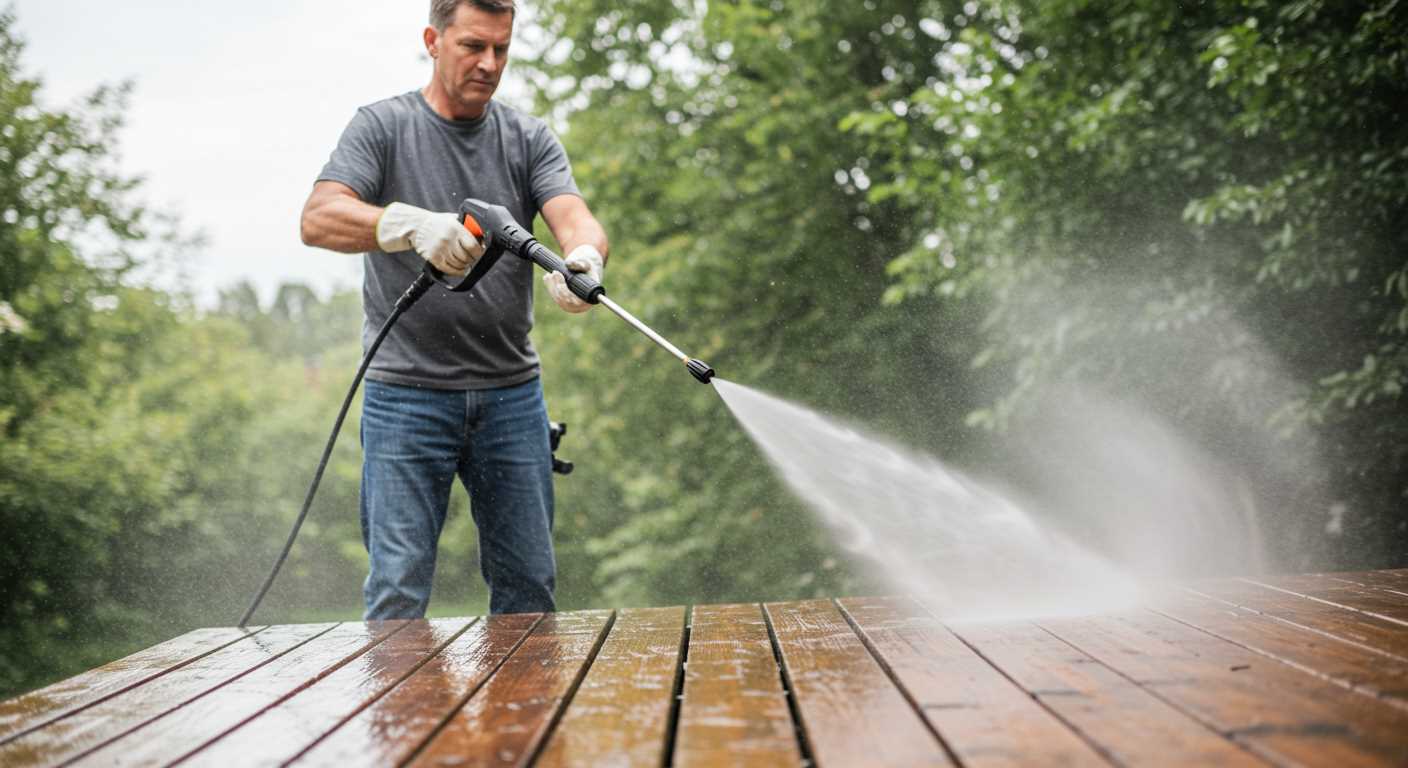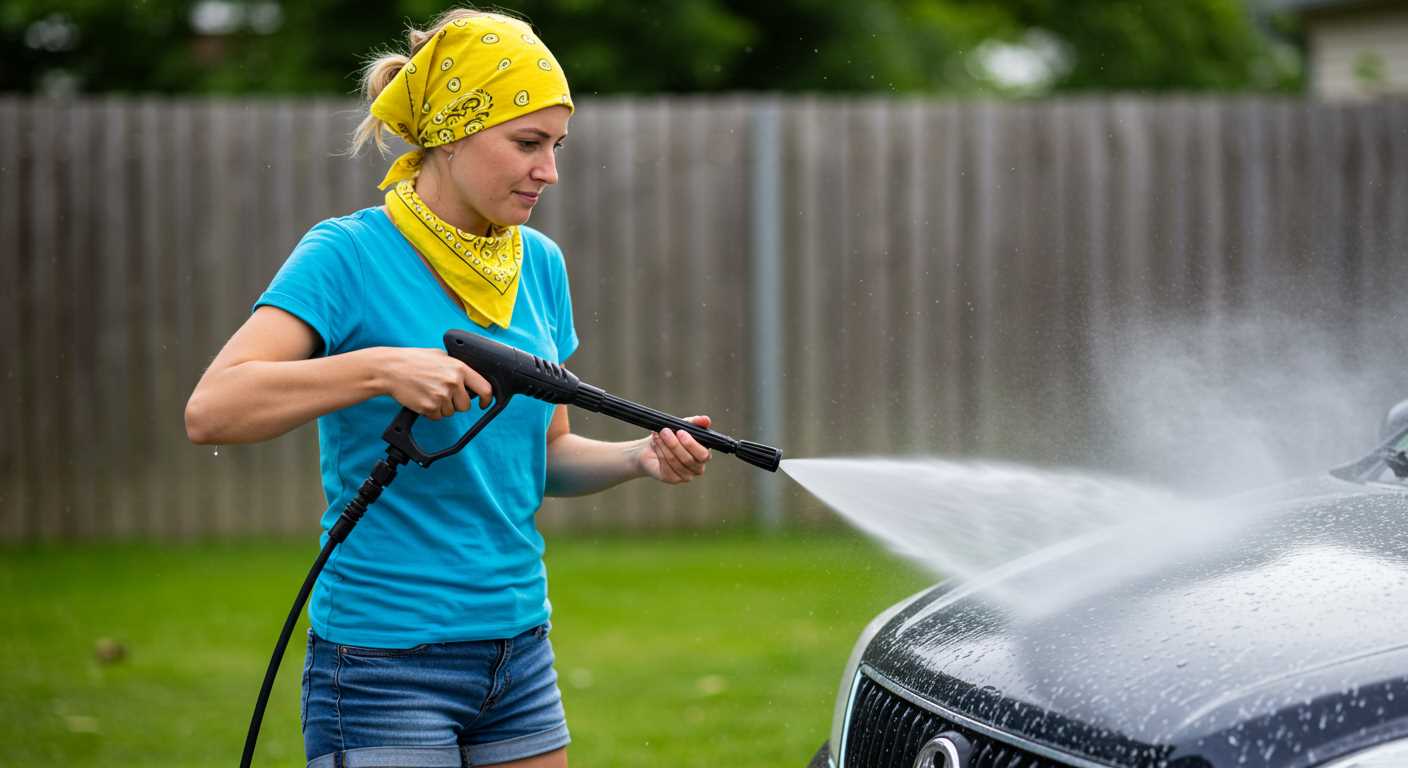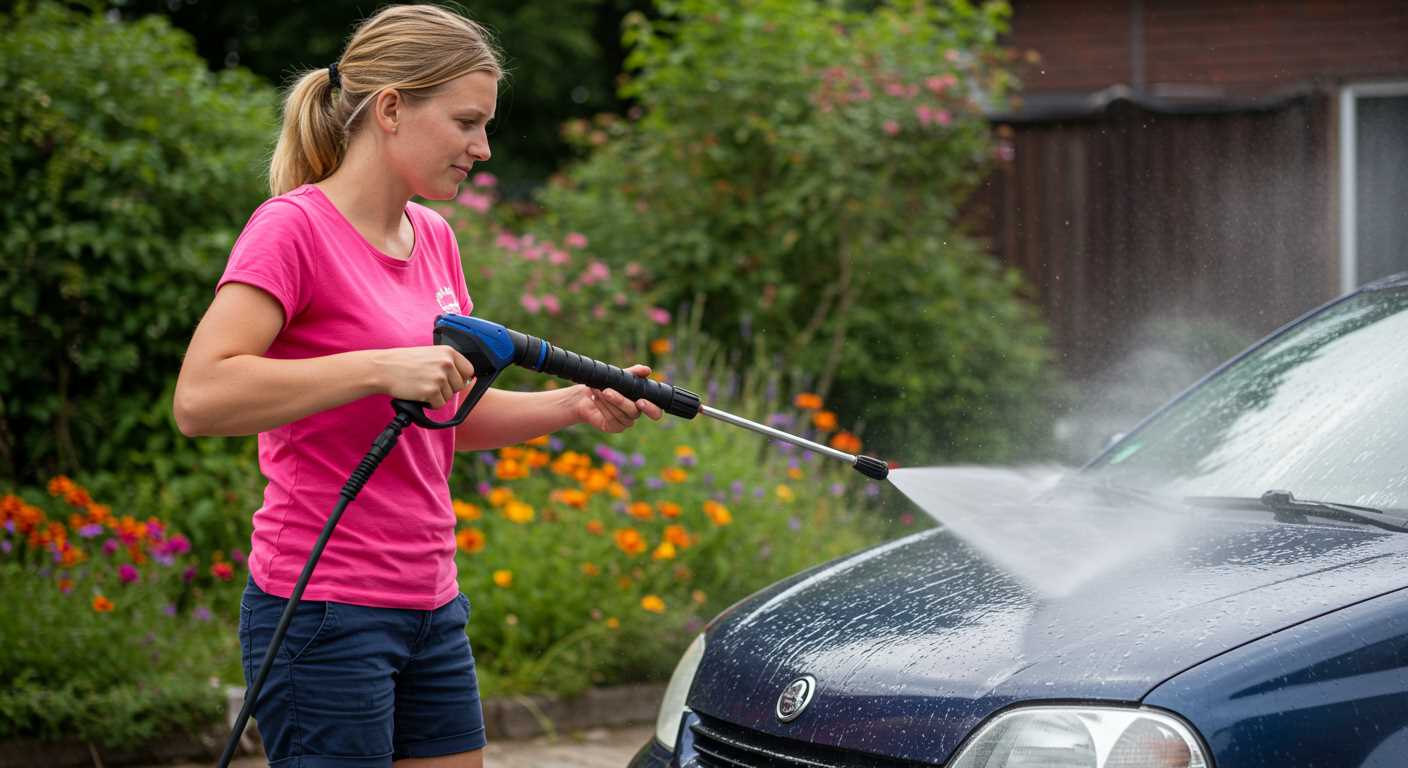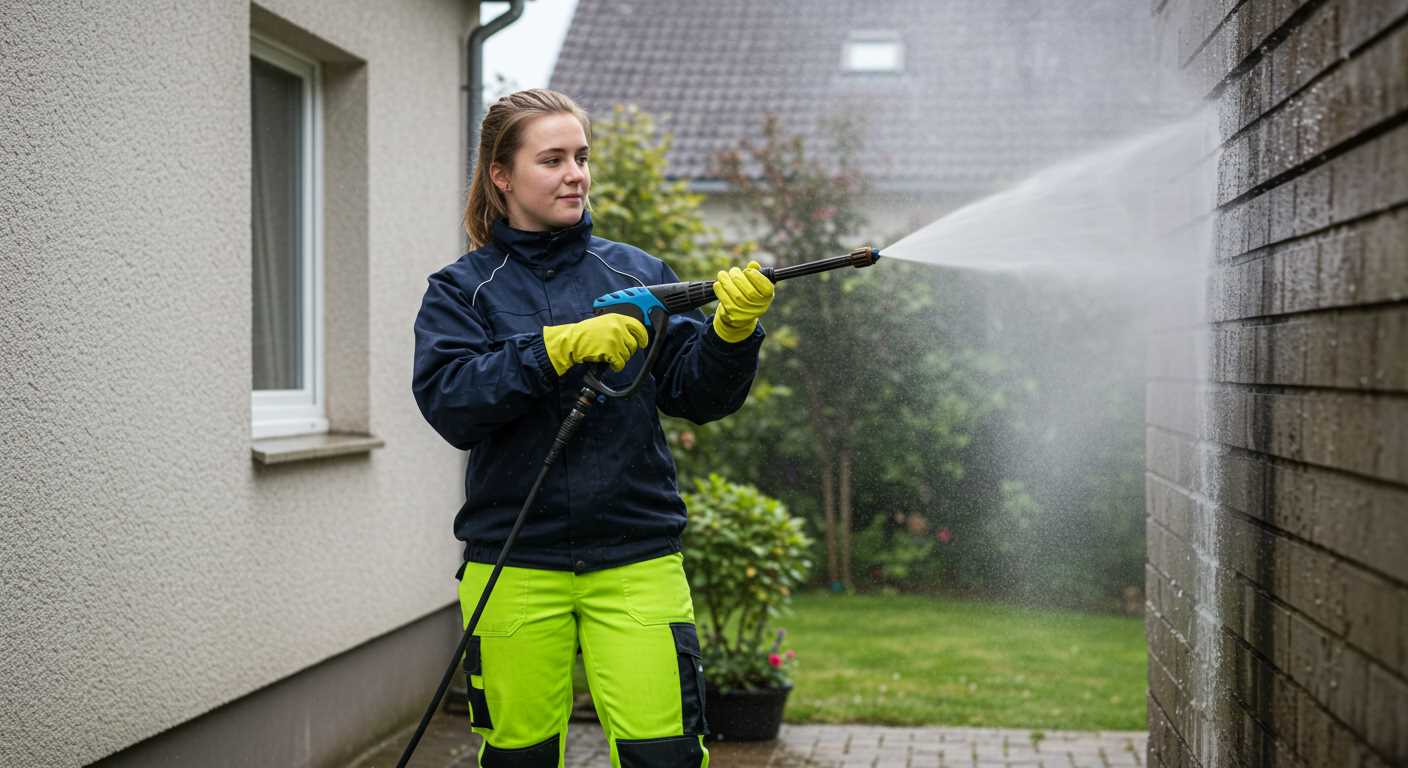



When operating high-pressure cleaning systems, the typical consumption rate ranges between 2 to 5 gallons per minute, depending on the model and settings. Annual usage can fluctuate, so it’s advisable to assess your equipment specifications for precise data.
For residential tasks, models consuming around 3 gallons per minute will effectively complete most jobs in a fraction of the time, while professional-grade units may demand more resources but offer enhanced cleaning power. Understanding these metrics allows for better planning of water supply during extended use.
In practice, it’s smart to keep a closer eye on the water source, especially during larger projects. A garden hose can typically support several models, but you might want to monitor flow to prevent interruptions. Knowing the desired flow rate will ensure efficiency and effectiveness in your cleaning tasks.
Water Consumption Rate for a Cleaning Device
In my experience, these machines typically consume between 2 to 4 gallons (approximately 7.5 to 15 litres) of fluid each minute. This translates to an hourly rate ranging from 120 to 240 gallons (about 450 to 900 litres). The exact amount can vary based on several factors including the model, nozzle type, and the task at hand.
Influencing Factors

The type of nozzle you choose plays a significant role in fluid consumption. A narrower nozzle generates a focused stream, resulting in lower usage while still maintaining cleaning efficiency. Additionally, the settings selected on the device can directly impact the amount needed–higher pressure settings often lead to increased consumption.
Practical Recommendations
For effective use, consider conducting a quick test to determine the average consumption. Keep a bucket with measurable increments nearby to gauge how much is being utilised during your typical cleaning tasks. This method allows you to optimise usage and limit unnecessary waste while achieving desired results.
Understanding Pressure Washer Specifications
Focus on flow rate and its implications on cleaning efficiency. Flow rate, measured in litres per minute (LPM), reveals the volume of cleaning solution supplied by the machine. For basic tasks, a flow rate between 5 to 8 LPM is sufficient, while heavy-duty applications require upwards of 10 LPM.
Contemplate the operating pressure, indicated in bar or PSI (pounds per square inch). The relationship between pressure and flow rate dictates effectiveness. For example:
- Low pressure with high flow is suitable for rinsing.
- Higher pressure is necessary for removing tough stains or grime.
Evaluate the type of motor as well. Electric models provide quieter operation and are ideal for residential tasks, whereas petrol variants offer mobility and are better for larger areas.
Inspect additional features that enhance functionality:
- Adjustable nozzles enable manipulation of spray angles, improving versatility.
- Soap dispensers allow for the use of detergents, boosting cleaning capabilities.
- Wheels and extensions facilitate manoeuvrability and access to hard-to-reach areas.
In summary, take time to understand these specifications to select the right machine tailored to your specific needs. Proper analysis leads to more effective cleaning outcomes, ultimately saving time and effort.
Average Consumption Rates for Different Models

In my extensive experience working with various cleaning devices, I’ve observed that consumption levels fluctuate across different models and brands. Entry-level units typically range from 4 to 6 litres per minute, which accumulates to approximately 240 to 360 litres in a standard hour of operation. Mid-tier options generally exhibit a usage spectrum between 7 to 10 litres per minute, translating to 420 to 600 litres hourly. Advanced units, often favoured for heavy-duty applications, can consume 11 to 15 litres per minute, which equates to 660 to 900 litres every hour.
Key Factors Influencing Rates
Variability in performance can stem from several factors including motor power, nozzle type, and cleaning task difficulty. For instance, a narrow nozzle provides a concentrated jet, often resulting in greater efficacy but higher fluid consumption during demanding tasks. Conversely, broader nozzles may reduce overall intake but could require additional time for effective cleaning. Understanding these nuances is critical when selecting the right model for your specific needs.
Recommendations Based on Usage
For routine household cleaning, a model with a consumption rate of 6 to 8 litres per minute suffices, providing a balance between efficiency and resource management. For larger projects or commercial use, opting for machines that exceed 10 litres per minute ensures optimal performance and speed. Assessing your cleaning requirements alongside these consumption rates will aid in making an informed choice.
Factors Influencing Water Consumption in Pressure Cleaners
.jpg)
Several elements impact the quantity of liquid utilised by these devices. First and foremost, the model type plays a significant role. Electric variants typically consume less than their gas-powered counterparts. In my experience, electric units can average around 300 to 600 liters for an hour, while gas models can exceed 800 liters.
Another consideration is the pressure setting; higher pressures often result in increased flow rates. For instance, while some units may operate efficiently at lower pressure settings, cranking it up can boost consumption significantly. Many users may not realise that adjusting the nozzle to a narrower angle also affects the output, concentrating the spray and potentially reducing overall usage.
The nozzle type selected can also contribute to the liquid demand. A rotating nozzle or high-pressure tip tends to create a smaller spray pattern, which can lead to less liquid being expelled and more efficient cleaning action. Conversely, a wide spray can lead to greater liquid requirement, impacting overall consumption.
Frequency of operation is noteworthy as well. Extended periods of use, especially without interruption, will naturally result in higher consumption rates. Those using these cleaners for prolonged sessions should consider performance specifications to assess the expected liquid use during operation.
Environmental variables such as temperature, surface texture, and dirt type can change how much liquid is needed. For instance, cleaning oily surfaces may require more liquid compared to dirt or dust removal on rough surfaces.
| Factor | Impact on Consumption |
|---|---|
| Type of Model | Electric models are more efficient; gas models use more |
| Pressure Setting | Higher pressure settings increase flow rates |
| Nozzle Type | Narrow nozzles conserve liquid; wider nozzles use more |
| Duration of Use | Longer sessions equate to greater liquid demand |
| Surface Conditions | Oily or sticky surfaces require more liquid |
Understanding these factors allows for better planning when selecting a cleaner, especially for specific tasks. Efficient operation can lead to significant savings over time while getting the job done effectively.
Comparing Gas vs Electric Pressure Washers
Choosing between gas and electric models depends largely on your specific cleaning requirements. For intensive outdoor tasks like deck cleaning or significant grime removal, gas versions often outperform electric ones in both power and efficiency. These units can generate high pressures, making them ideal for heavy-duty applications.
On the other hand, electric counterparts are typically easier to operate and maintain. They are quieter, produce no emissions, and can be plugged into a standard outlet, which adds convenience for residential users. Their lightweight design allows for better manoeuvrability, making them suitable for smaller projects and light to moderate cleaning tasks.
Energy consumption varies. Gas tools rely on fuel, which means you’ll need to factor in costs associated with refuelling, while electric options consume considerably less energy, reflected in lower utility bills. Also, consider the usability: if you need a unit for sporadic jobs or smaller areas, an electric model is often preferable.
Weight and portability are also significant. Gas units can be cumbersome due to their design and fuel storage. In contrast, electric models are more compact, providing easier storage and transport, particularly when dealing with tighter spaces. However, for high-pressure jobs requiring portability without outlet limitations, gas models excel.
Maintenance varies significantly. Gas machines require regular upkeep such as oil changes and spark plug replacements, while electric models generally demand minimal maintenance. This simplicity makes electric units appealing for homeowners seeking hassle-free options.
Ultimately, analyse your cleaning needs, budget, and frequency of use before deciding. If you’re tackling heavy-duty projects regularly, a gas unit will serve you better, whereas for occasional domestic tasks, an electric model is likely the smarter choice.
Calculate Your Consumption for Cleaning Tasks
To estimate the consumption needed for a cleaning task, gather specific details about the equipment and the area to be treated. Here’s a straightforward formula:
- Identify the flow rate of your cleaning device, generally provided in litres per minute (L/min).
- Determine the duration of your cleaning session in minutes.
- Multiply the flow rate by the total time to obtain an approximate volume.
For example, if a unit has a flow rate of 8 L/min and you’re planning to clean for 30 minutes, the calculation would be:
8 L/min × 30 min = 240 litres
Adjusting for Different Surfaces
Surface types play a role in the total requirement. More porous or textured surfaces may demand additional cleansing solutions or more time, impacting overall consumption. Consider the following:
- For concrete or masonry, anticipate higher needs due to their absorptive nature.
- For patios or decks, factor in any pre-treating substances that may require further application.
Additionally, keep in mind that more stubborn stains might necessitate revisiting certain areas, resulting in increased use. Thus, always account for extra time and volume in your overall assessment.
Environmental Impact
While assessing how much fluid you’ll require, remember to consider sustainability. Implement practices like:
- Using a recycling system where feasible.
- Employing attachments designed to optimise coverage and reduce spillage.
This ensures a responsible approach to cleaning without compromising results. Collect data over time to refine your calculations for future tasks.
Tips for Reducing Water Consumption While Washing
Utilise a trigger gun with a variable nozzle to easily manage flow rates. This allows you to control the spray effectively, reducing unnecessary discharge. Opt for models that feature adjustable settings for varying tasks, enabling a focused approach to cleaning.
Choose the Right Attachments
Select appropriate nozzles that match your task. Nozzles designed for specific jobs focus the stream, maximizing cleaning potential while minimizing fluid consumption. A 15-degree or 25-degree nozzle often strikes a balance between power and efficiency.
Wash During Optimum Conditions

Engage in cleaning tasks during cooler parts of the day. This reduces evaporation rates and ensures that the cleaning agents work more effectively. Additionally, remember to work in systematic sections to avoid over application in one area, which can lead to increased fluid loss.
Environmental Impact of Water Usage in Pressure Washing

Minimising the ecological footprint during cleaning tasks is paramount. Selecting models with lower consumption is a practical approach to reduce adverse effects on natural resources. Many modern devices are engineered for optimal efficiency, delivering impressive cleaning results using less liquid.
To mitigate the impact on local waterways, it’s advisable to avoid using cleaners that contain harsh chemicals, which can pollute ecosystems. Furthermore, employing biodegradable solutions ensures a safer environment for surrounding flora and fauna while maintaining performance.
Utilising surfaces that allow for efficient runoff or directing the output to areas where it can naturally absorb prevents waste. Developing a cleaning strategy that employs these techniques can contribute to preserving local habitats and promoting sustainable practices.
Regular maintenance of equipment enhances longevity and efficiency, resulting in less energy consumption over time. A well-maintained unit runs more effectively, reducing excess fluid use while extending its operational lifespan.
Implementing filtration systems can capture and repurpose runoff, harnessing what would typically be wasted. This innovative practice not only conserves resources but also presents opportunities for water reclamation.
By prioritising advanced techniques and sustainable products while adhering to best practices, the impact on the environment can be significantly mitigated, preserving precious resources for future generations.











